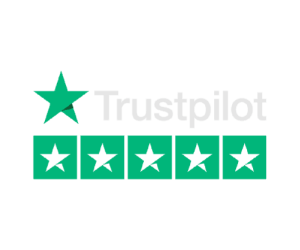A strong brand identity is the cornerstone of any successful startup. It’s not just a logo or a slogan, but the very essence of how your company is perceived by your customers, partners, and competitors. For startups, creating a compelling brand identity from the start can pave the way for long-term success, help you stand out in crowded markets, and connect with your target audience. At ArtRevo, we understand the unique challenges startups face and are here to guide you through the process.
What is Brand Identity?
Brand identity encompasses the visual and emotional elements that define your brand and communicate its personality to the world. It includes:
- Visual Components: Logo, color scheme, typography, packaging, and design.
- Voice and Messaging: Tone, style, and language used in communication.
- Core Values: The principles and mission that drive your business.
- Customer Perception: The emotions and associations your brand evokes.
For startups, a strong brand identity is critical to building trust, establishing credibility, and driving customer loyalty.
Tips for Building a Strong Brand Identity
1- Define Your Purpose and Values
Start by understanding your brand’s mission and vision. Ask yourself:
- What problems does my startup solve?
- What are our core values?
- What makes us different from competitors?
Having clear answers to these questions will help shape a brand identity that resonates with your audience.
2- Understand Your Target Audience
Your brand identity should reflect the preferences and expectations of your ideal customers. Conduct market research to gather insights about their demographics, values, and buying behavior. This ensures your brand aligns with their needs and aspirations.
3- Create a Memorable Logo and Visual Style
A strong logo is a vital part of brand recognition. Pair it with a cohesive color palette, typography, and design elements that reflect your brand personality. Consistency in visuals across all platforms reinforces your identity.
4- Craft a Distinctive Brand Voice
Your brand voice should match your target audience’s preferences and your industry. For example:
-
- Professional and authoritative for B2B startups.
- Friendly and conversational for lifestyle or consumer-oriented brands.
Develop a style guide to ensure consistent messaging across all channels.
5- Leverage Storytelling
Every startup has a unique story—use it to connect with your audience on a deeper level. Share your journey, the challenges you’ve overcome, and your passion for what you do. Authenticity is key to building trust and loyalty.
6- Invest in a User-Friendly Website
Your website is often the first interaction customers have with your brand. Ensure it reflects your identity through professional design, intuitive navigation, and clear messaging. A visually appealing, mobile-friendly site can leave a lasting impression.
7- Utilize Social Media
Social platforms are powerful tools for building brand identity. Share content that aligns with your values and engages your audience. Use consistent visuals, hashtags, and a defined tone to create a cohesive presence.
8- Focus on Customer Experience
A great brand identity goes beyond visuals—it’s also about delivering a positive customer experience. Ensure every interaction, from customer service to product delivery, reflects your brand values and commitment to quality.
9- Monitor and Adapt
Regularly assess how your brand is perceived through customer feedback, social media engagement, and analytics. Be willing to adapt and evolve your brand identity as your startup grows and market dynamics change.
The Role of ArtRevo in Building Brand Identity
At ArtRevo, we specialize in helping startups create strong, memorable brand identities that resonate with their target audience. Our services include:
- Logo Design: Crafting unique logos that capture your brand’s essence.
- Visual Branding: Developing cohesive color palettes, typography, and design elements.
- Content Strategy: Creating consistent messaging that aligns with your brand voice.
- Website Design: Building user-friendly, visually appealing websites that reflect your identity.
We work closely with startups to ensure every aspect of their brand identity supports their business goals.
Conclusion: Stand Out with a Strong Brand Identity
Building a strong brand identity is one of the most important investments a startup can make. It lays the foundation for customer loyalty, market recognition, and long-term success. By defining your purpose, understanding your audience, and creating a cohesive visual and verbal identity, you can position your startup for growth.
Ready to create a brand identity that leaves a lasting impression? Contact ArtRevo today and let’s bring your vision to life.
FAQs:
1. Why is brand identity important for startups?
Brand identity sets your startup apart from competitors, communicates your values to your audience, and helps build trust and loyalty. It’s essential for establishing credibility and creating a memorable presence in the market.
2. What elements are included in a brand identity?
Brand identity includes visual components like your logo, color palette, typography, and website design. It also encompasses your brand voice, messaging, mission, values, and the overall perception your brand evokes.
3. How do I create a brand identity that resonates with my target audience?
Start by researching your audience’s preferences, needs, and values. Align your brand’s visuals, messaging, and tone with what appeals to them. Consistency across all platforms ensures your identity resonates and builds recognition.
4. How long does it take to build a strong brand identity?
Building a strong brand identity is an ongoing process. While the initial design phase (logo, color scheme, and messaging) can take a few weeks to months, maintaining and refining your identity as your startup grows requires continuous effort.
5. Can I change my brand identity later?
Yes, rebranding is common as startups grow or pivot their business. However, it’s important to plan carefully to ensure the new identity aligns with your goals and doesn’t confuse your existing audience.



